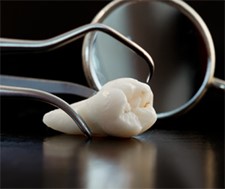
Wisdom Teeth Removal: What You Can Expect
Just the phrase “wisdom teeth removal” is enough to make your mouth hurt, but do you actually know what to expect during and after the procedure? Taking the time to learn more about it can reduce anxiety and help you better prepare for recovery.
Regardless of whether you’re getting some or all of your wisdom teeth removed, the information below will give you an inside look into what you can expect from the extraction procedure and healing process.
What to Expect During the Procedure
Depending on how many teeth you’re having extracted as well as your comfort level with the procedure, there are different types of anesthesia the oral surgeon might administer:
- Local Anesthesia — Administered near the site of each extraction to numb the surrounding area, meaning you’re awake during the procedure. While you won’t feel pain, you will likely feel pressure and movement.
- Sedation Anesthesia — Administered through an intravenous (IV) line in your arm. During the procedure, you’ll be conscious but won’t feel pain and will have only some memory of the procedure.
- General Anesthesia — Administered through your nose, as an IV line in your arm, or both. You’ll be completely unconscious during the procedure and won’t remember the surgery.
The extraction procedure itself involves several steps. The oral surgeon will:
- Create an incision to reveal the tooth and bone for removal
- Divide the tooth into sections (if necessary) to remove it
- Remove the tooth and clean the area where it was of any remaining debris
- Stitch the wound closed (in most cases)
- Insert gauze over each extraction site to control bleeding and promote clotting
What to Expect After the Procedure
The recovery process is different for every individual and will also vary depending on the type of anesthesia used. Those who receive sedation or general anesthesia will need more time to recover than those who receive local anesthesia.
Following these recommendations can promote healing after the procedure:
- Bite on Gauze — To control and reduce bleeding, gently bite on gauze pads and be sure to change them about every 20 minutes or so.
- Stay Elevated — Prop up the head to reduce bleeding. Laying flat can prolong it.
- Apply Ice — During the first 24 hours, applying ice to the outside of the cheek for 15 to 20 minutes at a time will help reduce swelling and bruising.
- Rest — Physical activity can exacerbate bleeding, making it important to rest as much as possible and avoid exercise immediately after the procedure.
- Eat Soft Foods — Soft foods will be gentle on the areas that were treated, making irritation less likely. Soup, applesauce, and yogurt are great options. Avoid drinking out of a straw, as it can cause the clot to be removed and result in complications.
- Keep Your Mouth Clean — After 24 hours, brushing teeth is ok. However, it is important to be careful around the extraction sites. Additionally, the mouth should be rinsed with warm salt water every two hours to clean the wounds.
- Don’t Smoke — For those who smoke, it is important to refrain for at least 24 hours after surgery.
Diminish Fear by Understanding What to Expect
For many, wisdom teeth extraction is frightening and the recovery process can be just as anxiety inducing. However, by taking the time to understand what happens during and after the procedure, you can ease your concerns and learn how to properly care for yourself and heal as quickly as possible.
Sources:
Wisdom Tooth Extraction. (2013, August 19). Retrieved June 3, 2014 from http://www.webmd.com/oral-health/wisdom-tooth-extraction
Wisdom Tooth Extraction: What you can expect. (2015, March 31). Retrieved June 3, 2015 from http://www.mayoclinic.org/tests-procedures/wisdom-tooth-extraction/basics/what-you-can-expect/prc-20020652
Share
JAN
2022

About the Author:
Since 1972, Salem Pediatric Dental & Orthodontic Associates has provided comprehensive preventive and therapeutic oral health care for infants and children through adolescence including those with special health care needs. We proudly serve the communities of Salem, Lynn, Peabody, Danvers, Marblehead, Swampscott, Beverly, and many more.